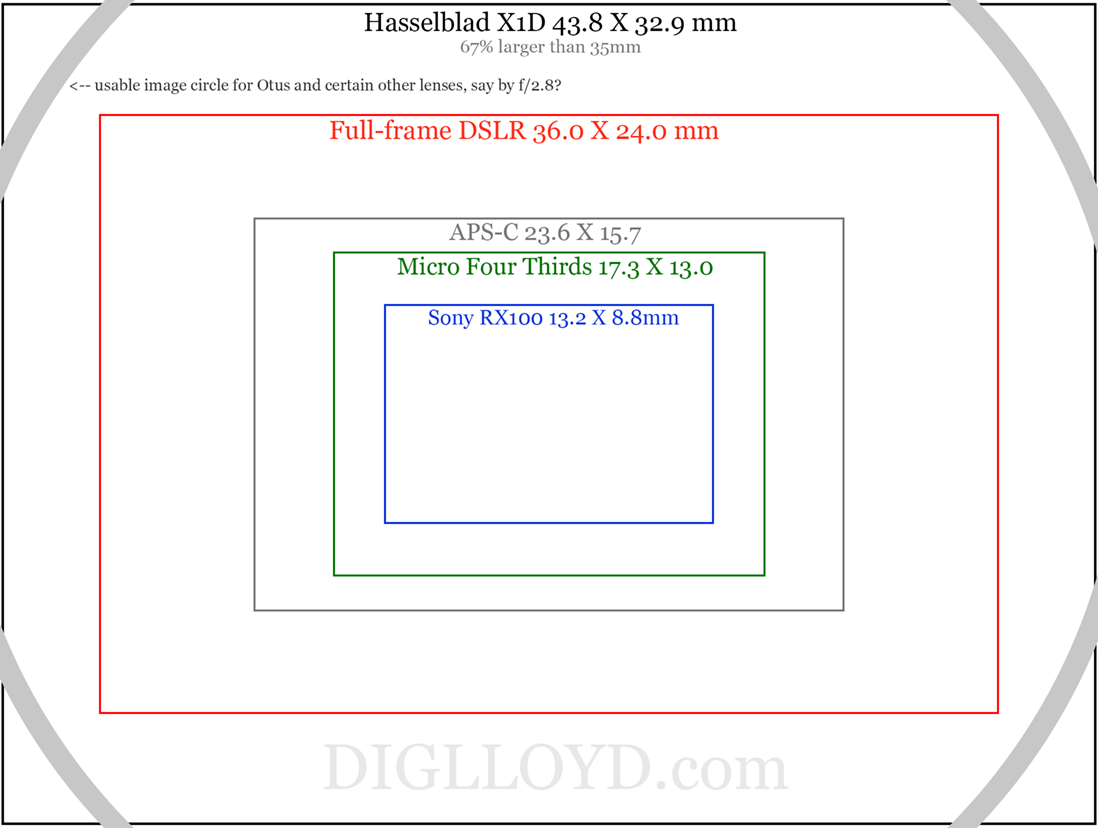Fujifilm GFX100S: Does it Deliver Meaningfully More Detail than the Best 35mm? Or is it just an Oversampling Megapixels Poseur?
re: oversampling
'Oversampling' as used here does not reference the Nyquist theorem vis a vis oversampling. Rather, for the same imaging area, sampling at a greater pixel count relative to something else. Thus a 100MP GFX100S is oversampling relative to a 50MP GFX50S by a factor of 1.4X linearly. Similarly, I do not refer to optimal aperture (eg f/4 or f/5.6) nor to on-axis, because my interest is real photographic images, and that means the entire frame (not just on-axis) and typically f/8 or f/11 for the GFX100S.
re: SHOOTOUT: Fujifilm GFX100S vs Sony A1, Deck and Roof
Linearly, the Fujifilm GFX100S packs ~1.4X more pixels into a sensor only 1.22X wider than a 35mm sensor of 50 megapixels eg Sony A1. More pixels, and smaller.
35mm sensor: 35.9 X 24 mm (some are 35.9mm wide)
GFX100S sensor: 43.8 X 32.9
Ratio (width): 43.8 / 35.9 = 1.22X ==> 0.822 speed/focal factor
The 43.8 X 32.9 mm sensor size requires 6/10 stop more depth of field for equivalence. In addition, the 1.22X dimensional difference equates to 1/2 stop circle of confusion disadvantage relative to pixel size. The total 'hit' in terms of diffraction dulling is about 1 stop.
For the same DoF , that means f/8, vs f/5.6 on 35mm cameras.

F/8 noticeably dulls the image on the 3.76 micron pixels of the GFX00S (the same effect is seen on the Sony A7R IV). Going to f/8 on 35mm vs f/11 on GFX100S, the effect hammers micro contrast.
Eyeball the edge-to-edge brilliance of the superb Voigtlander FE 50mm f/2 APO-Lanthar at f/5.6 vs what is seen on the GFX100S also at f/5.6 in Deck and Roof. Different league.
Now sum inferior lens performance + diffraction dulling. The total gain in sharpness can be next to nothing, as shown.
- The Fujifilm GFX100S is largely a camera good for oversampling, offering minimal if any gain in total sharpness with most of the GF lenses, and only modest gains with the best lenses.
- Lens performance is a limiting factor on the GFX100S, which is not the case with the best lenses on 35mm, particularly on Sony.
Proving it
See SHOOTOUT: Fujifilm GFX100S vs Sony A1, Deck and Roof
Reader Dr S writes:
Not that I own one but I am curious what the Nikon D850 with a Zeiss Otus 35mm lens would do with your same protocols used in the A1/GFX100s comparison. Yes, only 45mp, but a curiosity nonetheless with one of the best lenses in the world and the previous champion DSLR. Yes there are other lenses in your bag you could use and.... if you are so inclined.... please do so. Maybe I am not the only one who is curious.
DIGLLOYD: the Zeiss Milvus 35mm f/1.4 is a de facto Zeiss Otus by f/2, but the 35mm focal length (for 35mm format) has no direct match—a 28.7mm lens would be needed. Perhaps the Fujifilm GF 30mm f/3.5 would be close enough, but I’m not sure given deviations in actual focal length, plus distortion.
The 50mm focal length is more easily compared. I’ll see about adding them to the Fujifilm GFX100S vs Sony A1, Deck and Roof comparison using:
- Nikon D850 + Zeiss Otus 55mm f/1.4 APO-Distagon
- Leica SL2 + Leica 50mm f/2 APO-Summicron-SL ASPH in both standard and multi-shot high-res mode.
Christopher S writes:
Enjoying your photography reports, as always. I use regularly the Fujifilm GFX100s and Sony A7R IV depending mainly on how far I need to hike to a destination.
In general I tend to favor the GFX100s files because, to my eye, it’s tonal transitions are smoother, but a lot depends on the lens is being used, especially where sharpness is concerned. For example, even my relatively ancient and much used Sony 55mm f1.8 was clearly sharper across the frame than a brand new and presumably more modern GF 50mm f3.5 which I tried and returned.
One clear comparative weakness for the GFX system at this stage is the lack of lens options, as not all the GF lenses are equal to the very best comparable primes available for the A7R IV . But some certainly are.
I would like to encourage you to add further tests to this very interesting series, using for both systems the best prime lenses available. Say, the GF 23mm vs the Zeiss 18mm Batis, the GF 45mm against the Sony 35mm f1.4 GM or Voigtlander 35 f2 APO-Lanthar, or the GF120 Macro against Sony’s 90mm macro.
DIGLLOYD: I would not agree that Fujifilm GFX100S tonal transitions are smoother compare to the Sony A1, which in my view has superior best per-pixel, and is better per pixel than the Sony A7R IV. However, the GF100S has double the pixels, and oversampling is always better for image quality, everything else being equal. Look at it this way in terms of the same GF lens on the GFX100S vs the GFX50S II: there would be neglible if any sharpness gains, but all the digital artifacts are greatly reduced on the GFX100S.
I’s not clear to me that demonstrating the difference with more than a few combinations has much value once it is shown a few times, because it’s never going to be anything but a small difference (if at all) in sharpness and the dominant difference will always be the oversampling effect.




























